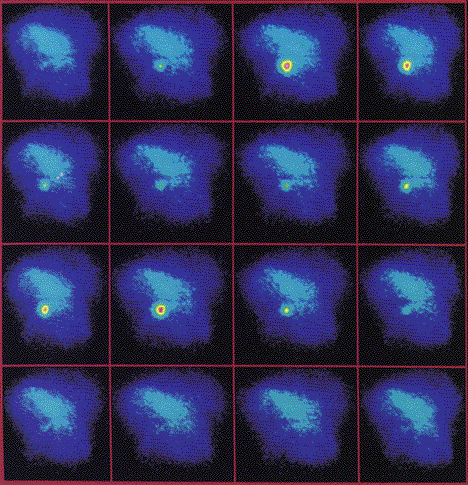Crab X-ray PulsarThe Crab pulsar was discovered in 1968 by David Staelin (MIT) and Edward Reifenstein (NRAO). The pulsar is a continual source of energy, and is the powerhouse that supplies the incredible 1038 that is radiated at all wavelengths from radio to X-rays. These images of X-rays from the Crab nebula are selected from a 5 hour exposure taken with the Einstein HRI. The length of the exposure is one full pulsar cycle, and clearly shows the pulsar growing to its brightest primary pulse, fading and then brightening again to its secondary pulse after which it fades completely at the end of the cycle. Images courtesy of F. R. Harnden (CfA). Reproduced from figure 3-18 in Charles and Seward.
IMAGES |
By Mission |
Stars |
HEASARC Home | Observatories | Archive | Calibration | Software | Tools | Students/Teachers/Public Last modified: Tuesday, 16-Mar-2004 12:15:23 EST |


